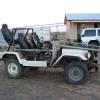New Garrett Gt3540 Internal Gate Is Here + Dyno Results
Announcements
-
Similar Content
-
Latest Posts
-
I have the same one. Mine didn't work right at the start. I had the wrong plug in the wrong spot. They asked for pictures and videos to be able to fix it. they where able to point it out in the video
-
that is a strange one. is the window motor winding them down or they fall down on their own? Is it just a short drop or a long drop in the windows?
-
So, I found my cover. And 12 hours later the replacement arrived. 🤷♂️
-
By Dose Pipe Sutututu · Posted
https://modeautoconcepts.com/products/mhd-flex-fuel-analyzer-kit-for-s55-bmw-m3-f80-m4-f82-m2-competition-f87-can-enabled?variant=39721423896694 Makes it SOOOOOOOO easy, no wiring, no cutting/chopping, no need to even try hard. Putting a flex sensor into a shitbox Skyline on the other hand............... Me being me, moved the stupid thing 3x times. -
When I was an apprentice sheet metal worker, we did all sorts of "love jobs" for the staff, including a alloy drop tank and alloy door cards for a LX Torana As for that panel, it would be super simple to fabricate yourself if you had some basic tools and a hour or so of time
-









Recommended Posts
Create an account or sign in to comment
You need to be a member in order to leave a comment
Create an account
Sign up for a new account in our community. It's easy!
Register a new accountSign in
Already have an account? Sign in here.
Sign In Now